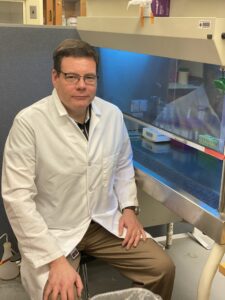
When a person has a stroke, it can alter anything from the brain to the rest of the body. Strokes are the third-leading cause of death for women, fifth overall and one of the top causes of disability in the United States. Populations most at-risk for stroke are individuals who have already had a stroke or TIA (transient ischemic attack), or pre-stroke.
Allex Raeder, a neuroscience coordinator at Tallahassee Memorial HealthCare, listed the top five ways a person can lower their risk of stroke.
“Complying with medication therapy, blood pressure management, exercise, smoking cessation, and healthy eating habits,” Raeder said.
According to the American Stroke Association, nearly half of American adults have high blood pressure, or hypertension. A healthy blood pressure is under 120/80 and a key to preventing strokes.
Raeder said the recovery process post-stroke depends on the extent of the stroke, the work they performed leading up to the activity level prior to the stroke, and the person’s support system.
“The individual’s pre-hospital condition and available support system play a large role in determining what recommendations we have for each patient as they deal with their injury,” Raeder said.
Recommendations like skilled nursing facilities, inpatient rehab or coordinated home health and outpatient rehab. Case managers and social workers who are dedicated to accessing the post-hospital resources for each patient are available at TMH. One issue arises when a patient requires assistance that they didn’t receive previously, which can prove to be a problem for both the patient and loved ones.
TMH has a stroke support group for survivors and their families that are facilitated by the Memory Disorder Clinic Coordinator. The meetings are held for the group the third Tuesday of each month from 11:30 a.m. to 12:30 p.m. at HarborChase Senior Living Community, located at 100 John Knox Road. These typically consist of a speaker who provides information and answers questions.
Tanya Stokes, a speech therapy team leader and stroke program coordinator at Encompass Health Rehabilitation Hospital, details what their support group meetings discuss.
“We allow time for general discussion among the members and time to seek support that one may need from other survivors,” Stokes said. “Topics vary depending on the group or needs which include healthy eating habits, coping after stroke and emotional changes.”
The Encompass Health Rehabilitation Hospital meets at 11 a.m. the second Wednesday of each month at the HealthSouth Rehabilitation Hospital (1675 Riggins Road).
For someone to identify the stroke symptoms, the best way is to study and remember the acronym BE-FAST, or FAST, as presented at www.stroke.org. The acronym first breaks down to face drooping. Does one side of the face droop or is it numb? Ask the person to smile. Is the person’s smile uneven or lopsided? Secondly, is there arm weakness? Is one arm weak or numb? Ask the person to raise both arms. Does one arm drift downward? Third is speech. Is their speech slurred? Is the person unable to speak or hard to understand? Ask the person to repeat a simple sentence. Fourth and final, it’s time to call 9-1-1 if the person shows any of these symptoms, even if the symptoms go away, call 9-1-1 and get them to the hospital immediately. By remembering this acronym, this will reduce the damage caused by a stroke.
Strokes commonly affect the left frontal lobe of the brain, which results in mild expressive aphasia or dysphagia, a condition in which the ability to speak is impaired. So if someone is having a stroke, refer back to the acronym BE-FAST to recognize the slurred speech as a symptom.
The left frontal lobe of the brain affects muscles on the right side of the body. Similarly, the right frontal lobe controls muscles on the left side of the body. Damage to the right frontal lobe will impair things like memory loss, motor skills dementia and aggressive behavior.
According to Samuel C. Grant, associate professor at Florida State University and program coordinator for the Chemical and Biomedical Engineering Program, stem cells play a major role post-stroke.
“After having a stroke, the brain – which has been deprived in local regions of oxygen and glucose – has some limited ability to repair itself, but in both the short and long term following a stroke, it is critical to support cells that are at risk, meaning that they could recover or could die,” Grant said.
Grant and his colleagues are using adult human mesenchymal stem cells, which are isolated from bone marrow to assist these at-risk cells to recover and recruit the brain’s limited resources to stroked regions of the brain. So far, the team has made progress.
“We have found that we can condition our stem cells using 3-D cell culture and other means to prepare the stem cells for the stroke environment so that they survive better and secrete the factors that lead to regeneration of neurons,” Grant said. “This will decrease inflammation and initiate regrowth of blood vessels to bring nutrients back to the affected areas.”
While Grant and his colleagues are evaluating the means of adult stem cells and how they can recruit limited resources for brain repair, more research is in being planned.
“We are also looking at the possibility of using stem cells derived from fat tissue and also to look at whether the secretions of the stem cells in culture can be used as a stroke treatment without directly injecting the cells themselves,” Grant said.
For more information, visit the stroke support groups listed earlier or go to www.stroke.org.